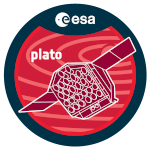Asteroseismology has revolutionized our understanding of stellar astrophysics. By allowing us to measure characteristics of modes, asteroseismology reveals the stellar interior and allows us to probe the star's physics.
In this talk, we will review the successes and difficulties of seismic detection using CoRoT, Kepler, and TESS instruments, with a particular focus on solar-like stars, which includes F, G, and K giant stars. We will discuss the challenges faced by the asteroseismic community regarding the detection of pulsations, the mode identification, and the measurement of stellar rotation for these stars.
While detecting pulsations is nowadays a relatively simple and reliable process, mode identification, which is essential for determining the physical properties of the modes (e.g., regions probed in the interior), remains a delicate, complex, and sometimes a time-consuming issue. The measurement of stellar internal rotation all along the HR-diagram is crucial for understanding the evolution and angular momentum transport in stars.
The PLATO mission will present new challenges for asteroseismology, such as the need to process data volumes that are several times greater than previous missions combined. In this context, the development of new advanced tools that can overcome the data scale issue is crucial to achieve the scientific goals of the mission. We will briefly discuss the methods and tools that will be required to achieve this with PLATO.

 PDF version
PDF version
